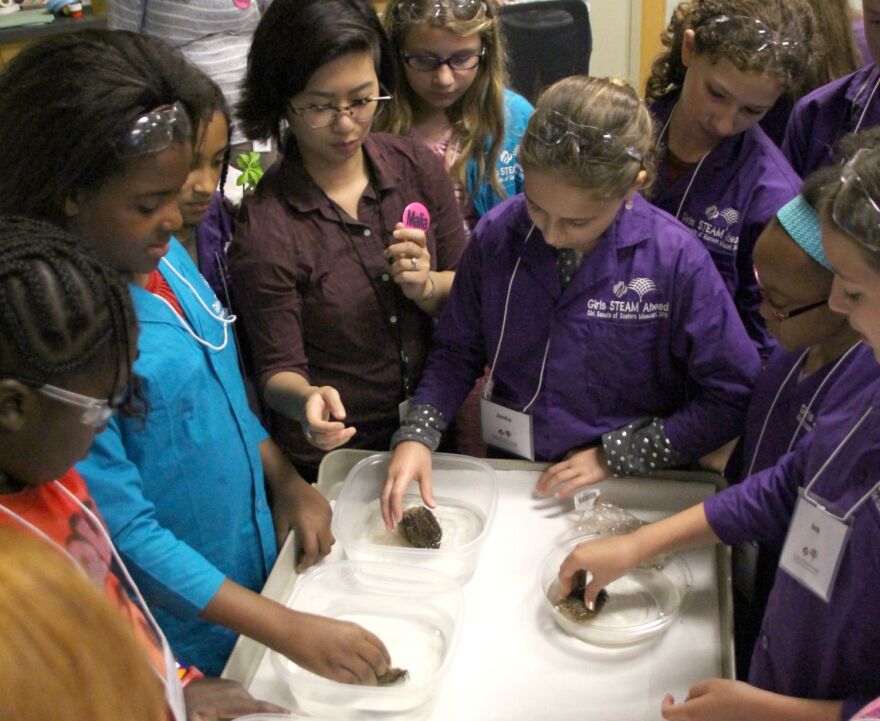More than 60 Girl Scouts have taken over the Donald Danforth Plant Science Center this week for an all-girls science camp.
This is the first year that the Danforth Center has hosted the program, which is designed to get girls from across eastern Missouri jazzed up about science.
Students from second grade up through high school are participating. Women scientists from the Danforth Center are serving as mentors to the girls and leading science-related activities at neighboring BRDG Park.

The Danforth Center's vice president for research, Toni Kutchan, said activities are tailored to each age group. "We’re teaching art and plants and science to the youngest group," Kutchan said. "The second group is learning how to build little robots to watch plants grow. The third group is learning about leaf shapes and photosynthesis — how leaves capture the energy of the sunlight. And the fourth group is doing a DNA, CSI-type investigation. Pretty heady stuff."
Kathryn Keifer, who leads communications for the Girl Scouts of Eastern Missouri, said the organization saw a real need to engage girls in STEM — science, technology, engineering and math. And she said the response has been terrific. "This program barely got posted online and boom it was full," Keifer said. "That tells us that a lot of girls are interested."
Most of the girls paid a $60 fee to attend the three-day program. But partial and full scholarships were available for low-income students.
When I visited, some of the girls were in a lab making recycled paper from colorful scraps. The process involved putting shreds of paper into a blender with water, and only got messier from there. Eleven-year-old Janka Gerber from Chesterfield talked me through the different steps all the way to the final result: a flat rectangle of pulpy paper. "And then we can put sparkles on it," Gerber said.

Earlier in the day, sixteen-year-old Hayley Huntley from Eureka had learned to extract DNA from strawberries. "You take strawberries, and you kind of like mash them up," Huntley said. "And you add shampoo to them, and it, like, supposedly breaks the cell membranes, and the cells, in the strawberries. And then you add alcohol to it."
That separates out the DNA. Huntley showed me some of the gooey concoction in a little plastic vial hanging from a necklace around her neck.
What does strawberry DNA look like? "It looks kind of like white snot," Huntley said. I'd have to agree.
Still, Huntley said the science camp itself is really cool.
Follow Véronique LaCapra on Twitter: @KWMUScience

